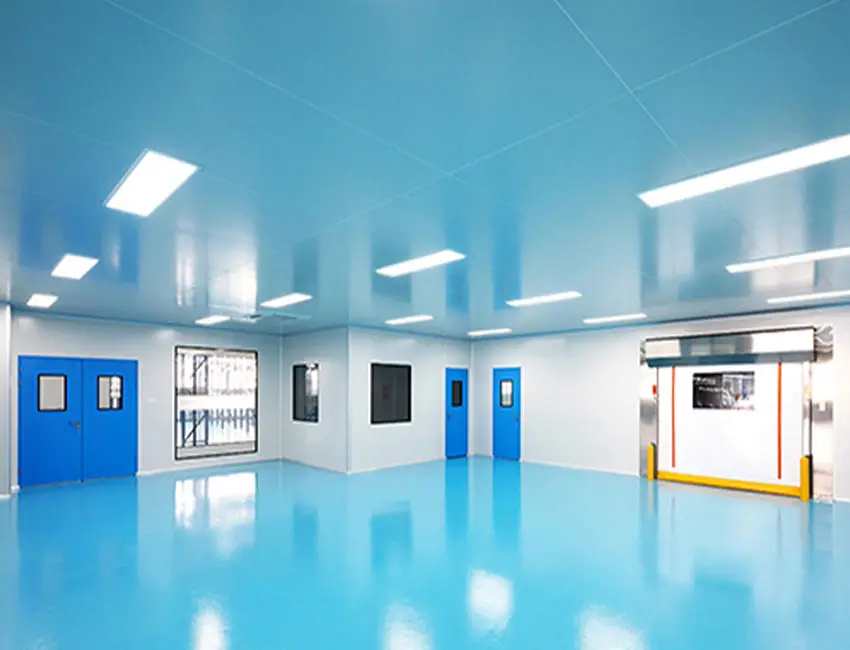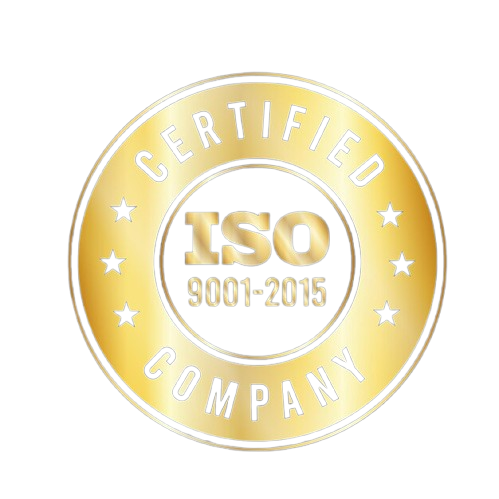How to Achieve Zero-Carbon Cleanrooms: Best Practices and Technologies
As industries prioritize sustainability, cleanrooms—a critical component in fields such as pharmaceuticals, biotechnology, electronics, and medical device manufacturing—are evolving to meet these eco-friendly standards. Traditional cleanrooms require high energy consumption to maintain temperature, humidity, and contamination control, which often translates to a significant carbon footprint. In response, many companies are working towards zero-carbon cleanroom designs by integrating energy-efficient technologies, sustainable materials, and eco-conscious practices.
Wise Link is committed to advancing cleanroom technology by offering zero-carbon solutions that allow businesses to operate responsibly without sacrificing safety or compliance. This guide explores the best practices and technologies that make zero-carbon cleanrooms possible, including energy-efficient HVAC systems, sustainable materials, renewable energy sources, and strategies for maintaining a minimal environmental footprint.
1. The Importance of Zero-Carbon Cleanrooms
Achieving zero-carbon cleanrooms aligns with global sustainability goals and contributes to corporate social responsibility (CSR) initiatives. A zero-carbon cleanroom eliminates or offsets all carbon emissions, creating a more sustainable model for cleanroom operations. The benefits of zero-carbon cleanrooms extend beyond environmental impact; they also offer cost savings in energy, operational efficiency, and long-term maintenance.
Why Zero-Carbon Cleanrooms Matter:
- Reducing Environmental Impact: Cleanrooms are energy-intensive, and transitioning to zero-carbon models reduces their ecological footprint.
- Lower Operating Costs: Energy-efficient systems and sustainable practices lower utility costs and reduce the demand for fossil fuel-based resources.
- Meeting Regulatory Standards: Many industries are adopting regulations and standards related to carbon reduction, making zero-carbon cleanrooms essential for compliance.
Wise Link’s Sustainability Commitment: Our cleanroom designs prioritize zero-carbon goals through energy-efficient technology, sustainable materials, and innovative design. We help clients achieve a cleaner, greener production environment that aligns with their sustainability objectives.
2. Energy-Efficient HVAC Systems
One of the primary sources of energy consumption in cleanrooms is the HVAC (Heating, Ventilation, and Air Conditioning) system, which maintains air quality, temperature, and humidity. Optimizing HVAC systems is essential for reducing carbon emissions and achieving a zero-carbon cleanroom.
Key Features of Energy-Efficient HVAC Systems:
- Variable Air Volume (VAV) Systems: Unlike constant air volume (CAV) systems, VAV systems adjust airflow based on real-time needs, reducing energy consumption when full air changes aren’t necessary.
- Energy Recovery Ventilation (ERV): ERV systems recover energy from exhaust air, using it to pre-condition incoming air. This reduces the load on HVAC units and saves significant energy.
- High-Efficiency Filters: HEPA and ULPA filters with low-resistance designs minimize the energy needed for airflow, supporting both air quality and energy efficiency.
Wise Link’s HVAC Solutions: We design energy-efficient HVAC systems that reduce carbon emissions without compromising cleanroom standards. Our systems use VAV and ERV technologies to maintain consistent environmental control while lowering energy usage.
3. Renewable Energy Integration
Powering cleanrooms with renewable energy sources is a crucial step towards achieving a zero-carbon footprint. Cleanrooms can significantly reduce their reliance on traditional fossil fuels by integrating renewable energy systems like solar, wind, or geothermal power.
Renewable Energy Options for Cleanrooms:
- Solar Power: Photovoltaic panels installed on facility rooftops or adjacent land provide clean, renewable energy that can offset a significant portion of a cleanroom’s electricity needs.
- Wind Power: In areas with consistent wind, on-site wind turbines or agreements with renewable energy providers offer a sustainable energy source.
- Geothermal Systems: Geothermal heating and cooling systems provide a stable, renewable solution for maintaining cleanroom temperature without relying on carbon-heavy energy sources.
Wise Link’s Renewable Energy Partnerships: We support clients interested in renewable energy integration by connecting them with energy providers and designing cleanroom systems that maximize renewable energy use. Our goal is to help clients achieve zero-carbon cleanroom operations through sustainable energy solutions.
4. Sustainable Construction Materials
Selecting sustainable materials is essential for reducing the embodied carbon of a cleanroom—the carbon emissions associated with producing and transporting construction materials. Using durable, recyclable, and low-impact materials minimizes the environmental footprint of cleanroom construction and ensures long-term sustainability.
Eco-Friendly Material Choices:
- Recyclable Metals: Stainless steel and aluminum, commonly used in cleanroom construction, are fully recyclable and offer long-lasting durability.
- Low-Volatile Organic Compound (VOC) Materials: Low-VOC materials, such as paints, sealants, and adhesives, improve indoor air quality and reduce harmful emissions.
- Sustainable Insulation: Materials like rock wool or eco-friendly foam offer high insulation values with minimal environmental impact, reducing the energy needed for heating and cooling.
Wise Link’s Material Selection: We carefully choose materials that support sustainability and meet cleanroom standards, ensuring that every cleanroom we design is built with environmental impact in mind. Our eco-friendly options reduce embodied carbon and align with zero-carbon objectives.
5. LED Lighting for Energy Efficiency
Lighting is another critical component of cleanroom energy consumption. LED (Light Emitting Diode) lighting offers an energy-efficient alternative to traditional lighting solutions, providing bright, consistent illumination with minimal energy use. By integrating LED lighting, cleanrooms can significantly reduce their power consumption and carbon emissions.
Advantages of LED Lighting:
- Lower Energy Use: LED lights use up to 75% less energy than traditional incandescent or fluorescent bulbs, making them ideal for high-demand cleanroom environments.
- Longer Lifespan: LEDs have a longer lifespan, reducing maintenance needs and minimizing the environmental impact of frequent replacements.
- Automated Controls: Occupancy sensors and daylight harvesting systems adjust lighting levels based on real-time conditions, optimizing energy use and minimizing waste.
Wise Link’s Lighting Solutions: Our cleanroom lighting systems use high-efficiency LEDs and advanced control systems to reduce energy consumption, maintain compliance with ISO standards, and support a zero-carbon cleanroom environment.
6. Water Conservation and Waste Reduction
Cleanrooms often require water for various processes, including cleaning, humidification, and cooling. Implementing water-saving technologies and waste reduction strategies can significantly reduce the environmental impact of cleanroom operations.
Water Conservation Strategies:
- Low-Water-Use Fixtures: Installing low-flow faucets and efficient cleaning systems minimizes water usage without compromising cleanliness.
- Closed-Loop Water Systems: Closed-loop systems recirculate water for cooling and humidification, reducing the need for fresh water and decreasing wastewater production.
- Ozone and UV-C Sanitization: Using ozone or UV-C for cleaning reduces the need for chemical cleaners, minimizing water contamination and supporting sustainability.
Wise Link’s Conservation Solutions: We design cleanrooms with water-efficient fixtures and closed-loop systems that reduce water consumption, supporting clients in achieving sustainable and low-impact operations.
7. Real-Time Monitoring and Data Analytics
Achieving and maintaining a zero-carbon cleanroom requires real-time monitoring and data analytics. Advanced monitoring systems track energy use, carbon emissions, and environmental conditions, providing actionable insights to help operators optimize performance.
Benefits of Real-Time Monitoring:
- Energy Optimization: Monitoring systems provide data on energy consumption, allowing operators to identify inefficiencies and make adjustments.
- Predictive Maintenance: Data-driven insights enable predictive maintenance, ensuring that equipment operates efficiently and reducing unplanned downtime.
- Carbon Tracking: Real-time data on carbon emissions allows cleanroom operators to assess their carbon footprint and make changes to reduce impact.
Wise Link’s Monitoring Solutions: We offer integrated monitoring systems that provide real-time feedback on cleanroom performance, supporting sustainable management practices and zero-carbon goals.
8. Sustainable Practices and Operational Protocols
Implementing sustainable operational protocols is essential for maintaining a zero-carbon cleanroom. Employee training, routine audits, and eco-friendly practices contribute to an environment that prioritizes efficiency and minimizes environmental impact.
Operational Protocols for Sustainability:
- Regular Energy Audits: Conducting energy audits identifies areas for improvement, helping operators make informed decisions on reducing carbon emissions.
- Employee Training: Educating employees on sustainable practices promotes awareness and supports consistent adherence to zero-carbon goals.
- Waste Reduction Programs: Establishing recycling and waste reduction programs minimizes waste generation, supporting a circular economy approach.
Wise Link’s Sustainability Programs: We assist clients in developing sustainable operational protocols, from energy audits to waste reduction strategies, ensuring that every aspect of cleanroom management aligns with zero-carbon objectives.
Designing Zero-Carbon Cleanrooms with Wise Link
Achieving a zero-carbon cleanroom is a multi-faceted process that requires advanced technology, sustainable materials, and energy-efficient design. From HVAC optimization and renewable energy integration to LED lighting and real-time monitoring, there are numerous ways to create a cleanroom environment that supports carbon reduction without sacrificing safety, cleanliness, or compliance.
At Wise Link, we are dedicated to delivering cleanroom solutions that meet the highest standards of sustainability and performance. By combining cutting-edge technology with eco-conscious design, we help clients achieve zero-carbon goals and build a cleaner, more responsible production environment. Contact Wise Link today to learn more about our sustainable cleanroom solutions and how we can help you create a zero-carbon cleanroom tailored to your needs.
Ready to Build a Zero-Carbon Cleanroom?
Partner with Wise Link to design a sustainable cleanroom that minimizes carbon emissions without compromising on performance or compliance. Our advanced solutions integrate energy-efficient systems, renewable energy, and eco-friendly materials to support your zero-carbon goals. Contact us today to learn how we can help you create a cleanroom that’s both high-performing and environmentally responsible.




